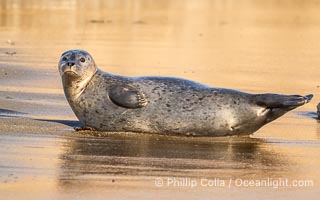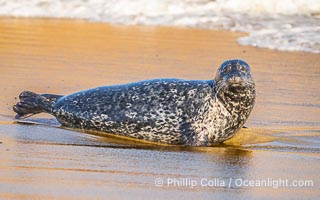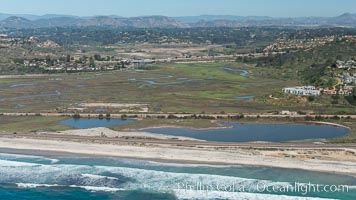
Aerial Photo of San Elijo Lagoon and Cardiff Reef beach. San Elijo Lagoon Ecological Reserve is one of the largest remaining coastal wetlands in San Diego County, California, on the border of Encinitas, Solana Beach and Rancho Santa Fe.
Location: Encinitas, California
Image ID: 30599
Location: Encinitas, California
Image ID: 30599
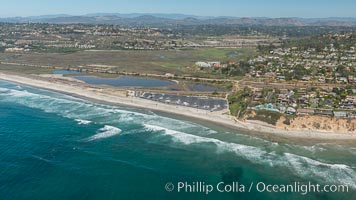
Aerial Photo of San Elijo Lagoon and Cardiff Reef beach. San Elijo Lagoon Ecological Reserve is one of the largest remaining coastal wetlands in San Diego County, California, on the border of Encinitas, Solana Beach and Rancho Santa Fe.
Location: Encinitas, California
Image ID: 30600
Location: Encinitas, California
Image ID: 30600
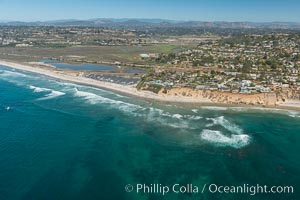
Aerial Photo of San Elijo Lagoon and Cardiff Reef beach. San Elijo Lagoon Ecological Reserve is one of the largest remaining coastal wetlands in San Diego County, California, on the border of Encinitas, Solana Beach and Rancho Santa Fe.
Location: Encinitas, California
Image ID: 30601
Location: Encinitas, California
Image ID: 30601
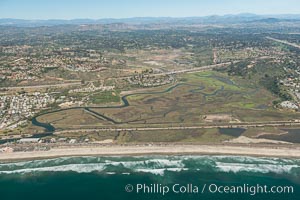
Aerial Photo of San Elijo Lagoon. San Elijo Lagoon Ecological Reserve is one of the largest remaining coastal wetlands in San Diego County, California, on the border of Encinitas, Solana Beach and Rancho Santa Fe.
Location: Encinitas, California
Image ID: 30618
Location: Encinitas, California
Image ID: 30618

American wigeon, Anas americana, male and female landing on water.
Species: American wigeon, Anas americana
Location: Bolsa Chica State Ecological Reserve, Huntington Beach, California
Image ID: 40025
Species: American wigeon, Anas americana
Location: Bolsa Chica State Ecological Reserve, Huntington Beach, California
Image ID: 40025
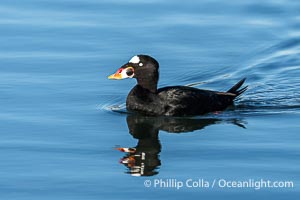
Surf Scooter, Melanitta perspicillata.
Species: Surf Scooter, Melanitta perspicillata
Location: Bolsa Chica State Ecological Reserve, Huntington Beach, California
Image ID: 40026
Species: Surf Scooter, Melanitta perspicillata
Location: Bolsa Chica State Ecological Reserve, Huntington Beach, California
Image ID: 40026

Pacific harbor seal profile portrait on wet gold-colored sandy beach at sunrise in La Jolla.
Location: La Jolla, California
Image ID: 40819
Location: La Jolla, California
Image ID: 40819
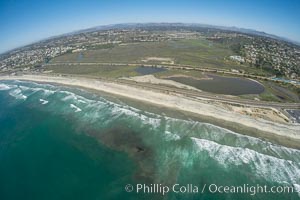
Aerial Photo of San Elijo Lagoon and Cardiff Reef beach. San Elijo Lagoon Ecological Reserve is one of the largest remaining coastal wetlands in San Diego County, California, on the border of Encinitas, Solana Beach and Rancho Santa Fe.
Location: Encinitas, California
Image ID: 30582
Location: Encinitas, California
Image ID: 30582
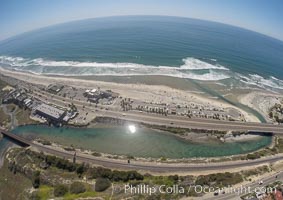
Aerial Photo of San Elijo Lagoon and Cardiff Reef beach. San Elijo Lagoon Ecological Reserve is one of the largest remaining coastal wetlands in San Diego County, California, on the border of Encinitas, Solana Beach and Rancho Santa Fe.
Location: Encinitas, California
Image ID: 30594
Location: Encinitas, California
Image ID: 30594

Brown Pelican Portrait Clapping Its Jaws, drops of water frozen in mid air between the tips of its bill, adult winter breeding plumage, feathers wet from rain.
Species: Brown Pelican, Pelecanus occidentalis, Pelecanus occidentalis californicus
Location: La Jolla, California
Image ID: 38910
Species: Brown Pelican, Pelecanus occidentalis, Pelecanus occidentalis californicus
Location: La Jolla, California
Image ID: 38910

Morning fog over Batiquitos Lagoon, Carlsbad. The Batiquitos Lagoon is a coastal wetland in southern Carlsbad, California. Part of the lagoon is designated as the Batiquitos Lagoon State Marine Conservation Area, run by the California Department of Fish and Game as a nature reserve.
Location: Carlsbad, California
Image ID: 35852
Panorama dimensions: 5274 x 16262
Location: Carlsbad, California
Image ID: 35852
Panorama dimensions: 5274 x 16262
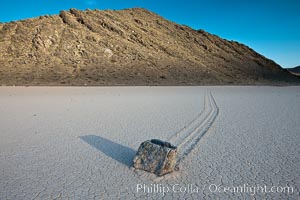
A sliding rock of the Racetrack Playa. The sliding rocks, or sailing stones, move across the mud flats of the Racetrack Playa, leaving trails behind in the mud. The explanation for their movement is not known with certainty, but many believe wind pushes the rocks over wet and perhaps icy mud in winter.
Location: Racetrack Playa, Death Valley National Park, California
Image ID: 25266
Location: Racetrack Playa, Death Valley National Park, California
Image ID: 25266
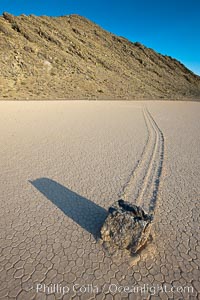
Sailing stone on the Death Valley Racetrack playa. The sliding rocks, or sailing stones, move across the mud flats of the Racetrack Playa, leaving trails behind in the mud. The explanation for their movement is not known with certainty, but many believe wind pushes the rocks over wet and perhaps icy mud in winter.
Location: Racetrack Playa, Death Valley National Park, California
Image ID: 25328
Location: Racetrack Playa, Death Valley National Park, California
Image ID: 25328
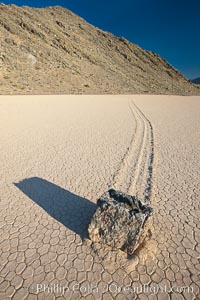
A sliding rock of the Racetrack Playa. The sliding rocks, or sailing stones, move across the mud flats of the Racetrack Playa, leaving trails behind in the mud. The explanation for their movement is not known with certainty, but many believe wind pushes the rocks over wet and perhaps icy mud in winter.
Location: Racetrack Playa, Death Valley National Park, California
Image ID: 25330
Location: Racetrack Playa, Death Valley National Park, California
Image ID: 25330
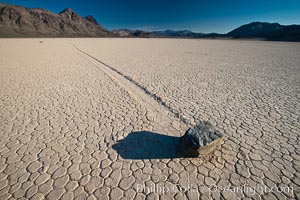
Sailing stone on the Death Valley Racetrack playa. The sliding rocks, or sailing stones, move across the mud flats of the Racetrack Playa, leaving trails behind in the mud. The explanation for their movement is not known with certainty, but many believe wind pushes the rocks over wet and perhaps icy mud in winter.
Location: Racetrack Playa, Death Valley National Park, California
Image ID: 25321
Location: Racetrack Playa, Death Valley National Park, California
Image ID: 25321
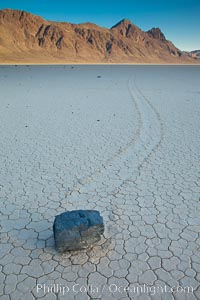
A sliding rock of the Racetrack Playa. The sliding rocks, or sailing stones, move across the mud flats of the Racetrack Playa, leaving trails behind in the mud. The explanation for their movement is not known with certainty, but many believe wind pushes the rocks over wet and perhaps icy mud in winter.
Location: Racetrack Playa, Death Valley National Park, California
Image ID: 25325
Location: Racetrack Playa, Death Valley National Park, California
Image ID: 25325
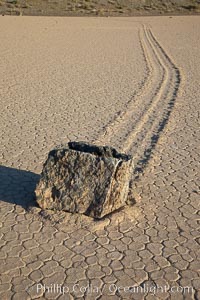
Sailing stone on the Death Valley Racetrack playa. The sliding rocks, or sailing stones, move across the mud flats of the Racetrack Playa, leaving trails behind in the mud. The explanation for their movement is not known with certainty, but many believe wind pushes the rocks over wet and perhaps icy mud in winter.
Location: Racetrack Playa, Death Valley National Park, California
Image ID: 25329
Location: Racetrack Playa, Death Valley National Park, California
Image ID: 25329
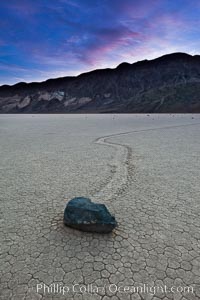
Sunrise on the Racetrack Playa. The sliding rocks, or sailing stones, move across the mud flats of the Racetrack Playa, leaving trails behind in the mud. The explanation for their movement is not known with certainty, but many believe wind pushes the rocks over wet and perhaps icy mud in winter.
Location: Racetrack Playa, Death Valley National Park, California
Image ID: 27699
Location: Racetrack Playa, Death Valley National Park, California
Image ID: 27699
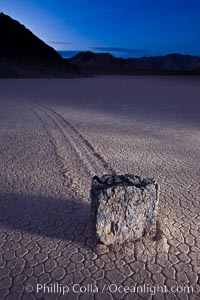
Sunrise on the Racetrack Playa. The sliding rocks, or sailing stones, move across the mud flats of the Racetrack Playa, leaving trails behind in the mud. The explanation for their movement is not known with certainty, but many believe wind pushes the rocks over wet and perhaps icy mud in winter.
Location: Racetrack Playa, Death Valley National Park, California
Image ID: 27696
Location: Racetrack Playa, Death Valley National Park, California
Image ID: 27696
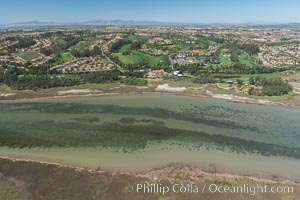
Aerial photo of Batiquitos Lagoon, Carlsbad. The Batiquitos Lagoon is a coastal wetland in southern Carlsbad, California. Part of the lagoon is designated as the Batiquitos Lagoon State Marine Conservation Area, run by the California Department of Fish and Game as a nature reserve.
Location: Carlsbad, Callifornia
Image ID: 30562
Location: Carlsbad, Callifornia
Image ID: 30562
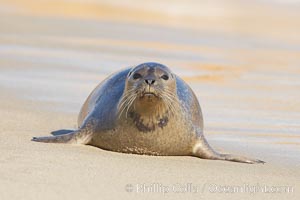
Pacific harbor seal on wet sandy beach.
Species: Pacific harbor seal, Phoca vitulina richardsi
Location: La Jolla, California
Image ID: 20212
Species: Pacific harbor seal, Phoca vitulina richardsi
Location: La Jolla, California
Image ID: 20212
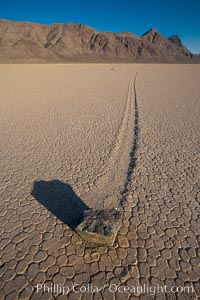
A sliding rock of the Racetrack Playa. The sliding rocks, or sailing stones, move across the mud flats of the Racetrack Playa, leaving trails behind in the mud. The explanation for their movement is not known with certainty, but many believe wind pushes the rocks over wet and perhaps icy mud in winter.
Location: Racetrack Playa, Death Valley National Park, California
Image ID: 25322
Location: Racetrack Playa, Death Valley National Park, California
Image ID: 25322
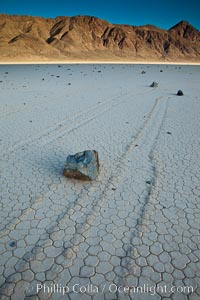
Sailing stone on the Death Valley Racetrack playa. The sliding rocks, or sailing stones, move across the mud flats of the Racetrack Playa, leaving trails behind in the mud. The explanation for their movement is not known with certainty, but many believe wind pushes the rocks over wet and perhaps icy mud in winter.
Location: Racetrack Playa, Death Valley National Park, California
Image ID: 25324
Location: Racetrack Playa, Death Valley National Park, California
Image ID: 25324
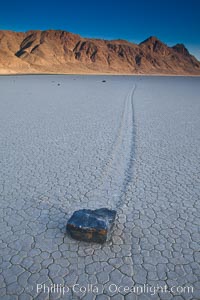
Sailing stone on the Death Valley Racetrack playa. The sliding rocks, or sailing stones, move across the mud flats of the Racetrack Playa, leaving trails behind in the mud. The explanation for their movement is not known with certainty, but many believe wind pushes the rocks over wet and perhaps icy mud in winter.
Location: Racetrack Playa, Death Valley National Park, California
Image ID: 25327
Location: Racetrack Playa, Death Valley National Park, California
Image ID: 25327
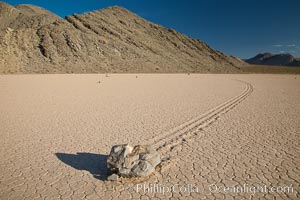
Sailing stone on the Death Valley Racetrack playa. The sliding rocks, or sailing stones, move across the mud flats of the Racetrack Playa, leaving trails behind in the mud. The explanation for their movement is not known with certainty, but many believe wind pushes the rocks over wet and perhaps icy mud in winter.
Location: Racetrack Playa, Death Valley National Park, California
Image ID: 25331
Location: Racetrack Playa, Death Valley National Park, California
Image ID: 25331
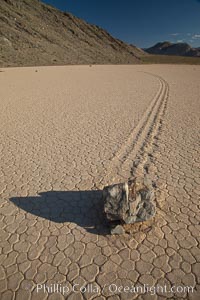
A sliding rock of the Racetrack Playa. The sliding rocks, or sailing stones, move across the mud flats of the Racetrack Playa, leaving trails behind in the mud. The explanation for their movement is not known with certainty, but many believe wind pushes the rocks over wet and perhaps icy mud in winter.
Location: Racetrack Playa, Death Valley National Park, California
Image ID: 25332
Location: Racetrack Playa, Death Valley National Park, California
Image ID: 25332
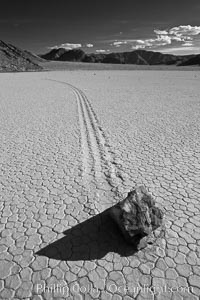
Sailing stone on the Death Valley Racetrack playa. The sliding rocks, or sailing stones, move across the mud flats of the Racetrack Playa, leaving trails behind in the mud. The explanation for their movement is not known with certainty, but many believe wind pushes the rocks over wet and perhaps icy mud in winter.
Location: Racetrack Playa, Death Valley National Park, California
Image ID: 25333
Location: Racetrack Playa, Death Valley National Park, California
Image ID: 25333

